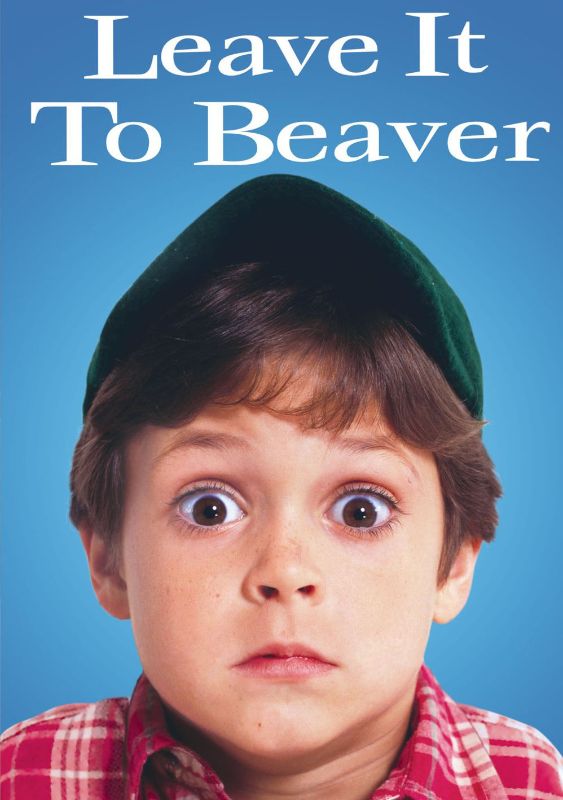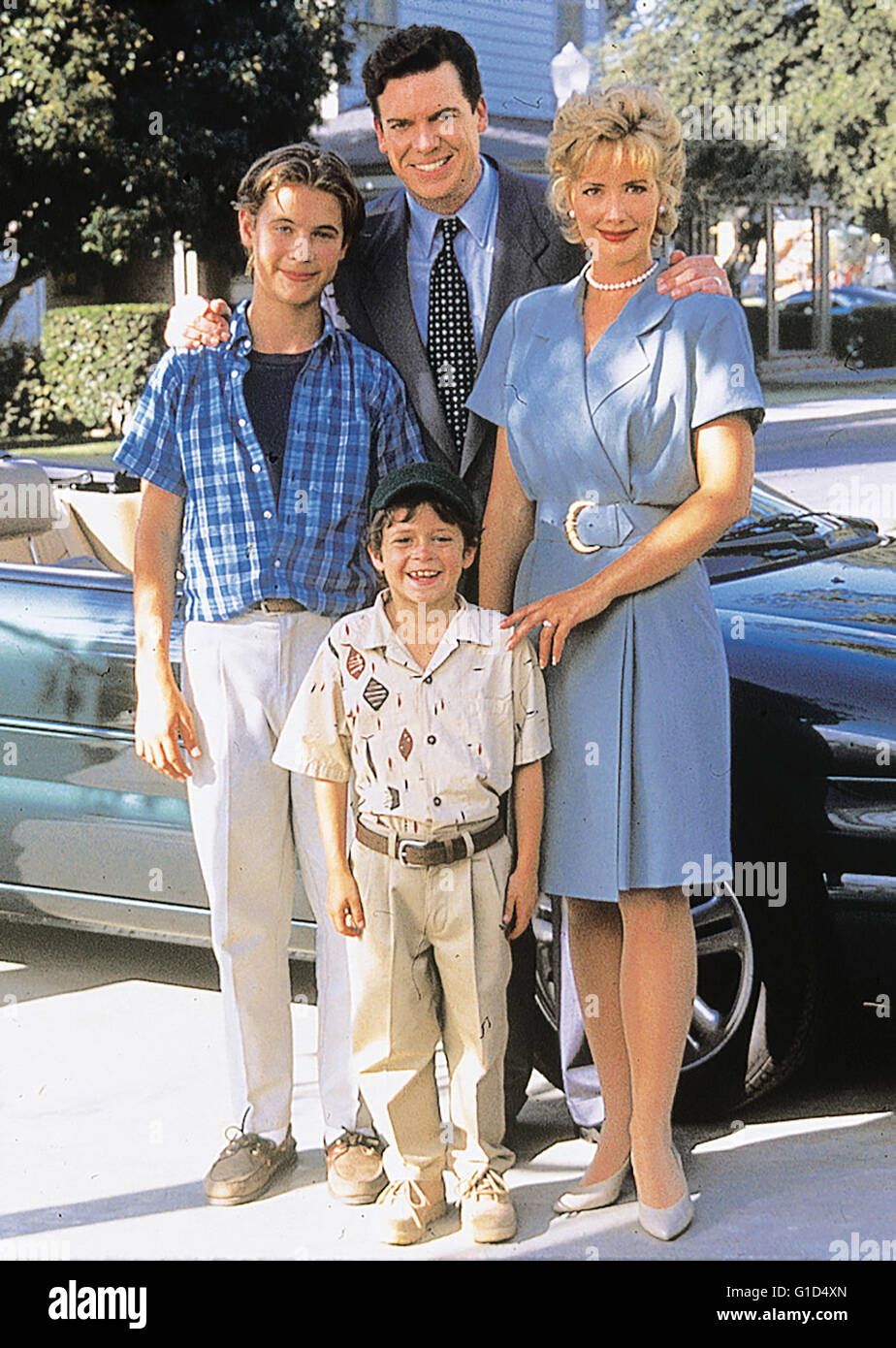Ever wondered how a phrase from a classic sitcom infiltrated the American vernacular, becoming a shorthand for a specific kind of wholesome, yet sometimes unrealistic, scenario? Leave It to Beaver, far from being just a television show, has evolved into a cultural touchstone, its very name echoing through decades, carrying with it a complex blend of nostalgia, satire, and social commentary.
The genesis of Leave It to Beaver lies in the post-World War II era, a time when America yearned for stability and a return to normalcy. This desire found expression in the burgeoning popularity of family sitcoms, and Leave It to Beaver quickly became a cornerstone of this genre. Broadcast initially on CBS and later on ABC, the show offered a meticulously crafted vision of suburban life, centered around the Cleaver family: Ward, June, Wally, and, of course, the ever-mischievous Theodore Beaver Cleaver. The show’s appeal was undeniable, attracting audiences with its relatable stories of childhood adventures, family dynamics, and the pursuit of everyday values. Yet, the show's enduring legacy stems from more than just its popularity; it lies in its ability to reflect, and subtly shape, American ideals.
To understand the full impact of Leave It to Beaver, one must delve into the details. Here’s a breakdown of the key players and the show's lasting influence:
| Subject | Details |
|---|---|
| Title | Leave It to Beaver |
| Original Run | October 4, 1957 – June 20, 1963 (CBS & ABC) |
| Creator(s) | Joe Connelly and Bob Mosher |
| Main Characters | The Cleaver Family: Ward, June, Wally, and Theodore Beaver Cleaver, and their friends and neighbors |
| Key Themes | Family, childhood, moral lessons, suburban life, societal expectations |
| Cast | Barbara Billingsley (June Cleaver), Hugh Beaumont (Ward Cleaver), Tony Dow (Wally Cleaver), Jerry Mathers (Theodore Beaver Cleaver) |
| Cultural Impact | Defined the ideal American family for a generation; its influence extends to today |
| Slang Meaning | A slang term that can mean different things depending on the context. It can be a campy 1950s TV show, a way of saying don't worry about it, a strip club tip, or a sexual act. |
| Related Shows | Father Knows Best, The Donna Reed Show, Ozzie and Harriet |
| Reference | Wikipedia |
The world depicted in Leave It to Beaver was undeniably aspirational. The Cleaver home, with its perfectly manicured lawn and seemingly effortless domestic tranquility, became an emblem of the American dream. June Cleaver, with her pearls and ever-present smile, represented the ideal homemaker, a nurturing figure who effortlessly maintained order and provided emotional support. Ward Cleaver, the wise and understanding father, dispensed gentle guidance and imparted valuable life lessons. These characters, and the situations they navigated, were carefully crafted to reinforce specific values and ideals prevalent in the mid-20th century.
However, it wasn't just the depiction of the Cleaver family that resonated. The show's format, with its self-contained episodes and predictable resolutions, provided a sense of comfort and predictability. Each episode typically followed a familiar pattern: Beaver, often through a naive mistake or misunderstanding, would find himself in a predicament. After a period of reflection and often, a heart-to-heart talk with Ward, Beaver would learn a valuable lesson, ultimately leading to a sense of closure and moral reinforcement. This formulaic approach, while sometimes criticized for its simplicity, was a key element of the show’s appeal. It offered a reassuring message that, in the face of challenges, there were always solutions, and that good ultimately prevailed.
Beyond the surface-level charm, Leave It to Beaver subtly reflected and reinforced societal norms and expectations. The roles of men and women were clearly defined. Ward went to work, provided for his family, and offered guidance, while June managed the household, cared for the children, and created a warm and welcoming environment. This division of labor mirrored the social realities of the time, contributing to the show's authenticity. The show wasn't simply entertainment; it was a reflection of the cultural landscape, reflecting the values and aspirations of a nation.
Yet, even as Leave It to Beaver embraced and celebrated these ideals, it also offered a glimpse into the complexities of human relationships and the challenges of navigating childhood. Beaver, in particular, was a relatable character. His misadventures, often stemming from his innocent curiosity and occasional acts of mischief, resonated with young viewers. He was the embodiment of childhood, with all its awkwardness, misunderstandings, and moments of triumph. Through Beaver’s experiences, the show explored themes of peer pressure, honesty, loyalty, and the importance of family. These were universal themes, transcending the specific setting of the show and contributing to its enduring appeal.
The show's influence extends beyond its original broadcast run. Syndication, the process of selling the rights to broadcast the show on various channels, ensured that Leave It to Beaver remained a constant presence in American homes. The show was easily accessible and could be enjoyed by both older viewers and younger viewers. The show's presence ensured that the cultural significance and the show's characters remained in the public's consciousness. It became a familiar and comforting presence, accessible across generations.
The phrase Leave It to Beaver entered the lexicon, taking on a variety of meanings. It could be used to describe something as idyllic, a situation where everything is in its place. Often, it was used with a touch of irony, recognizing that the world, outside the confines of the Cleaver home, was not always as neat and tidy. The phrase became a shorthand, a way of referencing a particular type of nostalgia, a longing for simpler times. Alternatively, it served as a cautionary note, a reminder that the idealized picture was not always realistic.
In analyzing the show, it is important to understand the context. As we celebrate the show's anniversary, we also recognize the importance of its legacy. The show offers a cultural touchstone for its time. It provided a window into the dreams of a generation, revealing societal values and aspirations. The popularity of Leave It to Beaver helped establish the foundations of television sitcoms. The themes that the show introduced became a hallmark of family life.
The enduring impact of Leave It to Beaver lies in its ability to encapsulate a specific moment in American history, while simultaneously speaking to universal human experiences. It is a reminder of the power of family, the challenges of childhood, and the enduring appeal of simple stories. The show may have presented an idealized version of suburban life, but its ability to connect with audiences across generations ensures its place as a significant cultural artifact. In a world of constant change, the phrase Leave It to Beaver remains a nostalgic echo of an era, a reminder of the values and aspirations that shaped a nation.



